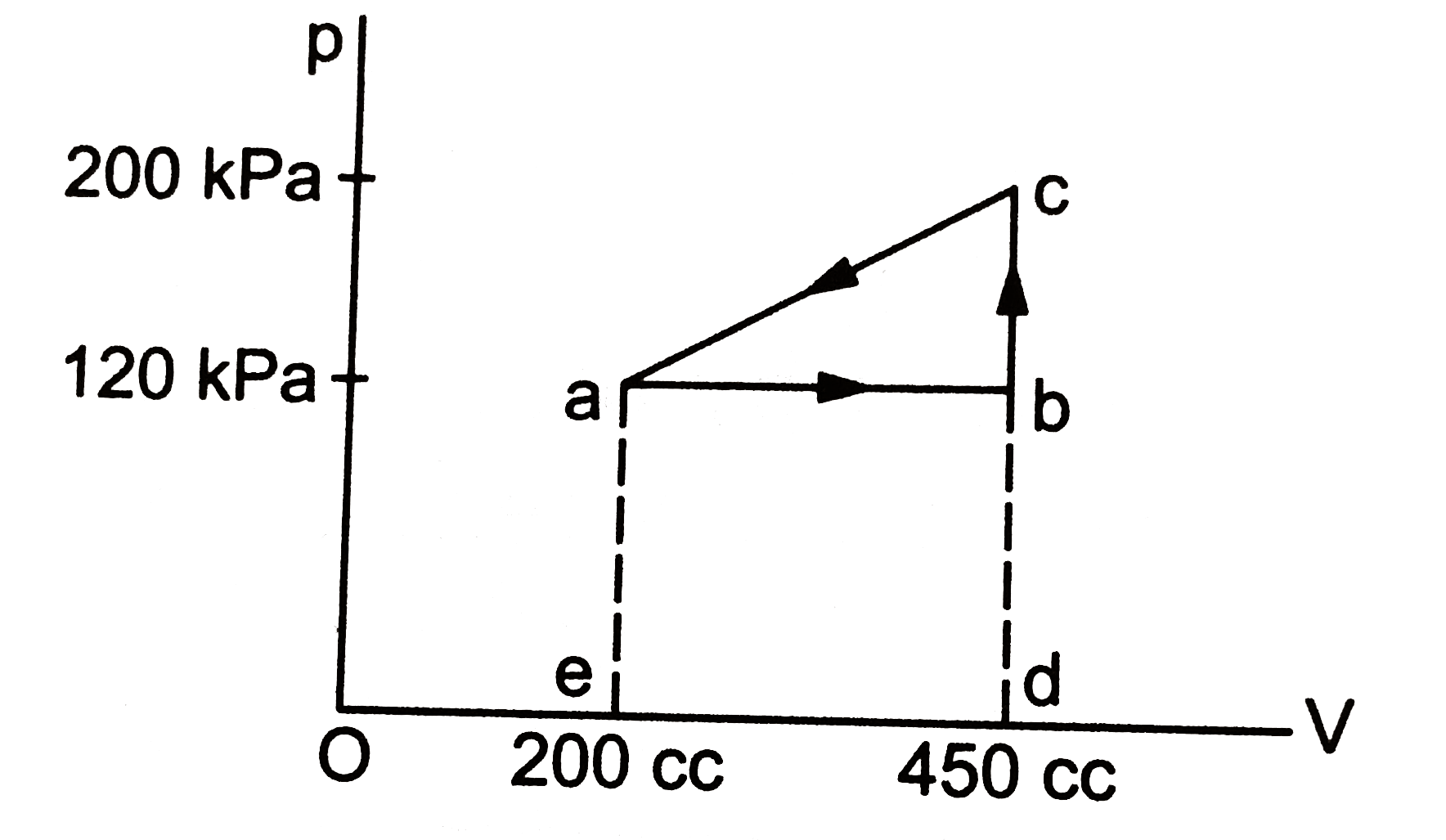Calculate the work done when 56g of iron reacts with hydrochloric acid in (a) a closed vessel of fixed volume and (b)an open beaker at 25∘C.
a. Vessel is of fixed volume, hence ΔV=0. No work is done.
b. The gas driver back the atmosphere hence.
W=−PexΔV
Also, ΔV=Vfinal−Vinitial=Vfinal(∴Vinitial=0)
∴ΔV=nRTPex or W=−Pex=−nRT
where n is the number of mole of H2gas obtained from n mole of Fe(s).
Fe(s)+2HCI(aq)→FeCI2(aq)+H2(g)
1mol, 1mol
∴n=5656=1mol
∴w=−1×8.314×298=−2477.57J
The raaction mixture in the given system does 2.477kJ of work driving back to atmosphere.
Topper's Solved these Questions
- THERMODYNAMICSBOOK - CENGAGE CHEMISTRY ENGLISHCHAPTER - THERMODYNAMICSEXERCISE - Exercise
1 Videos
- THERMODYNAMICSBOOK - CENGAGE CHEMISTRY ENGLISHCHAPTER - THERMODYNAMICSEXERCISE - Ex 6.1
26 Videos
- STOICHIOMETRYBOOK - CENGAGE CHEMISTRY ENGLISHCHAPTER - STOICHIOMETRYEXERCISE - Archives Subjective
33 Videos
Similar Questions
Calculate the work done when 112 g iron reacts with dilute HCl at 300 K. The reaction is carried out in an open container
(At mass of Fe = 56)
View SolutionThe work done in open vessel at 300 K, when 56 g iron reacts with dilute HCI is
View SolutionWhen FeS is dissovled in aqueous hydrochloric acid in a closed vessel the work done is __________
View SolutionThe magnitude of work done (in kcal) when 120 gm of Mg (s) is reacted with excess of hydrochloric acid in an open vessel at 27∘C is
View SolutionCalculate the pressure exerted by 56 g of an ideal gas (with molar mass 28 g mol−1) enclosed in a vessel of volume 0.1m3 at 300 K (R = 8.314 N m mol−−1K−1)
View SolutionThe work done in an open vessel at 300K, when 112g iron reacts with dil. HCL is:
View SolutionCalculate the work done in open vessel at 300K, when 92gNa reacts with water. Assume ideal gas neture.
View SolutionState your observations when :
Dilute hydrochloric acid reacts with iron (II) sulphide.
View SolutionCalculate work done in chemical reaction (in kcal)
A(s)+3B(g)→C(l) at 227∘C at 1 atm in closed vessel.
View Solutioncalculate the work done by a gas as it is taken from the state a to b, b to c and c to a as shown in

View Solution
